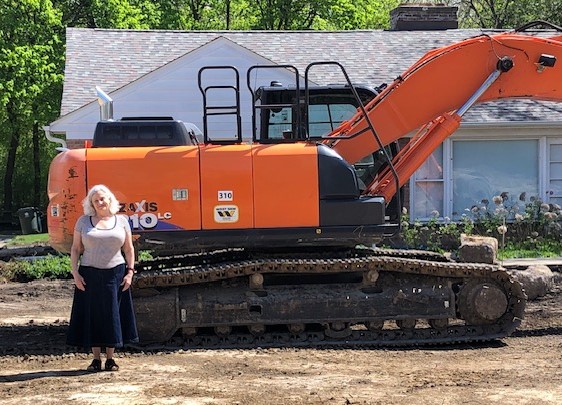Construction is underway on a new garden at the History Center on the Lake Forest-Lake Bluff Campus.
The aim of this project is not just to beautify but also to tell a story.
History center officials plan to build five new gardens in the Lake Forest Building, 509 E. Deerpath, as well as an ADA-compliant half-mile walking trail that will showcase the evolution of the area’s landscape design from the early 20th century to the present.
“Using plants as a medium, the various garden aesthetics featured reference styles popular over the past century,” project designer Craig Bergmann said in an email. “Objects from historic gardens are featured as décor in these spaces.”
Other highlights of the plan include a wooden walkway connecting the museum and research centre, and new entrances at the front and rear of the museum.
Carol Summerfield, executive director of the history center, said the organization embarked on this endeavor because of educational reasons.
“To our knowledge, there is no single garden that tells the story of the evolution of landscape design,” she says. “We want to tell the story of how styles have evolved over time and why.”
Summerfield added that the region has good stories to tell that highlight its roots and its significant contributions, both literally and figuratively.
“The evolution of landscape design that came out of Lake Forest and Lake Bluff is a sea change in garden design in the Midwest, and perhaps in the whole of America,” she said. “What drove it were concepts of preservation and conservation that have gone hand in hand with garden and landscape design since the early 20th century.”
Specifically, the envisioned project will feature five themes related to the region: a traditional garden in a historic mansion, a country garden in a courtyard, a modern garden, a midcentury garden, and a secret garden showcasing a midcentury, middle-class garden.
“Gardening was never just for the wealthy,” says Summerfield.
She said each garden will have a different look because different species of plants are used in each era and there will also be two or three educational panels providing information about the design style, architects, estate and workers involved in the construction.
The history center also plans to plant as many native species as possible, with the goal of keeping the garden intact for the long term.
“We manage it so that they have an environment where they can actually grow healthy and have enough space to survive for a few hundred years,” Summerfield said.
Another aspect of the gardens is a prairie bioswale and rainwater garden that aims to recreate a pre-Western natural environment along the fence line at the western edge of the site.
“It’s an incredibly effective way to control water flow, especially in areas where there’s very little vegetation because of the large amounts of water flowing through them,” Summerfield said.
Passersby in the Deer Path Building, east of downtown Lake Forest, have noticed work underway on three gardens that will cost about $2 million, to be paid for through donations, and the history center recently secured funding for a fourth garden, Summerfield said.
She points to 2026, when people will see the start of a new era for the History Center campus.
“The gardens will be at their peak beauty within 10 years,” Summerfield says, “but within two years they should be great.”


